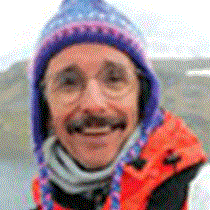Kinnvika, Svalbard
In the afterglow of having seen more than 60 polar bears in the last two days, many on the sea ice in brilliant sunshine, we bundled against a stiff wind this morning and went ashore at Kinnvika, the site of a Swedish/Finnish research base from the 1957-58 International Geophysical Year. A cluster of abandoned buildings (bunkhouse, sauna, outhouse, etc.) made an intriguing window into the past. We lost little time exploring and photographing them, their weathered faces and shuttered windows and tight doors, the old, wooden shovels, and sleds and other accoutrements lying about. The sauna was in especially good shape, ready to roll, with paper, matches and kindling stacked neatly in the corner by the small wood-burning stove. These guys knew how to stay warm and have a good time.
While some of us remained near the landing site to work on our photography (focusing mostly on the historic buildings), others hiked up to a promontory that afforded grand views of the ship and surrounding topography, the gentle Arctic contours accentuated by ribbons of melting snow. We found saxifrages, avens, beds of moss, bright orange lichens, and other splashes of life and color on the otherwise drab land. A few of us managed to glissade down snow patches en route back to the landing. It was great fun.
Afternoon found us in the Hinlopen Strait (that separates the two largest islands in the Svalbard Archipelago), protected from intensifying winds. Our global luminary, Captain Alfred Scott McLaren, gave a riveting presentation on his many years of undersea exploration, including dives on the Titanic and the Bismark. His authenticity was exceeded only by his humor and humility.
With winds exceeding 35 knots, our afternoon landing evolved into some well-deserved on-board quiet time to review images, catch up on our journals, laugh with new friends, and meet with the expedition photo team in the chart room.




